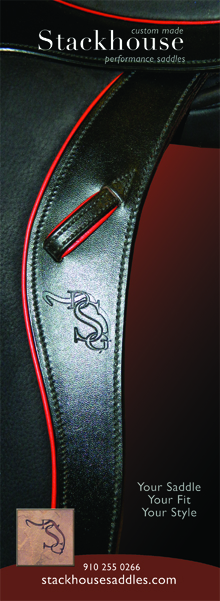Search the Site
Guest Blog post # 74: "Imagine (there's no pulling)" by Bill Woods
Imagine (there's no pulling)
A lot of bad riding at the Morgan Worlds where I judged this fall. Not all—to be sure there were some good rides and plenty of good horses. But when you are judging and you wish you had a rubber stamp for the scribe because you're saying the same things over and over, you have to draw some conclusions.
The main issue that rankled? Front to back riding again and again. Horses over shortened in front and jacked up in an artificial frame where they couldn't possibly use their backs and where they were clearly miserable.
Obviously this is not a problem peculiar to the breed. All too often at the bottom of the test sheet or in clinics that I do I remind people that being on the bit can't seem like a punishment to the horse. He mustn't feel trapped by it or needing to escape. On the contrary, good riding helps a horse develop an affinity for the bit, to seek it, and to comfortably accept it.
Some people think the only way to communicate with a horse's mouth is through a restraining hand. I once described an apocryphal tabletop contraption to a rider to help her get past this habit. Picture a fat compression spring of fairly fine wire nailed upright to a board. Fashion an inverted cone of cork which you balance on the open end of the spring, its apex pushing slightly into the circular opening. To the flat upper face of the cone attach a string by a screw eye.
The game then is to hold the other end of the string like a rein and with delicate finger motions be able to tilt the spring forward and back without dislodging the little cork cone and popping it out of its resting place. The point? To learn conversational gambits that make the horse pliable out on the end of his neck and don't require pulling on his face to make him give.
A complementary device—also imaginary—would be a set of stocks sitting just in front of the withers through which the rider's wrists would pass, allowing enough arm motion to maintain contact from her elbows to the bit but not enough room to pull backwards as a forceful aid.
With these two "fantasy machines" limiting what she can do with her hands, the rider can focus her attention on the primary aids—legs and seat—and how to use them to ride TO the hand.
A lot of bad riding at the Morgan Worlds where I judged this fall. Not all—to be sure there were some good rides and plenty of good horses. But when you are judging and you wish you had a rubber stamp for the scribe because you're saying the same things over and over, you have to draw some conclusions.
The main issue that rankled? Front to back riding again and again. Horses over shortened in front and jacked up in an artificial frame where they couldn't possibly use their backs and where they were clearly miserable.
Obviously this is not a problem peculiar to the breed. All too often at the bottom of the test sheet or in clinics that I do I remind people that being on the bit can't seem like a punishment to the horse. He mustn't feel trapped by it or needing to escape. On the contrary, good riding helps a horse develop an affinity for the bit, to seek it, and to comfortably accept it.
Some people think the only way to communicate with a horse's mouth is through a restraining hand. I once described an apocryphal tabletop contraption to a rider to help her get past this habit. Picture a fat compression spring of fairly fine wire nailed upright to a board. Fashion an inverted cone of cork which you balance on the open end of the spring, its apex pushing slightly into the circular opening. To the flat upper face of the cone attach a string by a screw eye.
The game then is to hold the other end of the string like a rein and with delicate finger motions be able to tilt the spring forward and back without dislodging the little cork cone and popping it out of its resting place. The point? To learn conversational gambits that make the horse pliable out on the end of his neck and don't require pulling on his face to make him give.
A complementary device—also imaginary—would be a set of stocks sitting just in front of the withers through which the rider's wrists would pass, allowing enough arm motion to maintain contact from her elbows to the bit but not enough room to pull backwards as a forceful aid.
With these two "fantasy machines" limiting what she can do with her hands, the rider can focus her attention on the primary aids—legs and seat—and how to use them to ride TO the hand.






